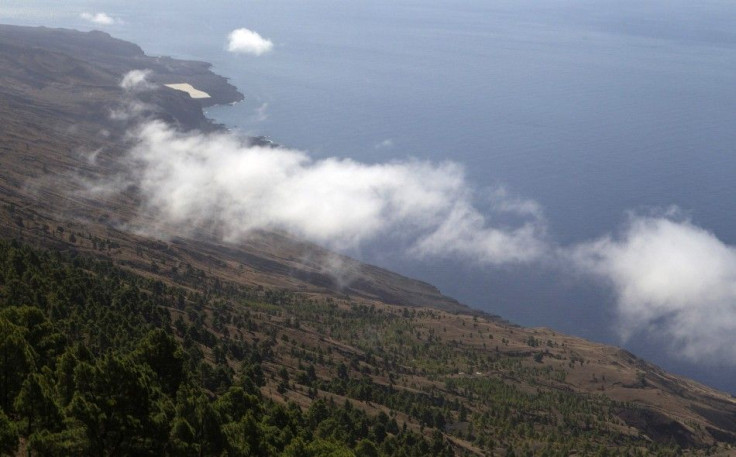Canary Islands Volcanic Eruption: Hundreds Remain Evacuated

Roughly 600 people were evacuated Tuesday on Spain's El Hierro Island in the Canaries due to the eruption of a nearby underwater volcano. They remained outside their homes on Wednesday as authorities feared an impending eruption.
Spain's Instituto Geographico Nacional (IGN) confirmed on Tuesday that an underwater eruption was occurring about three miles off the southern coastline of El Hierro.
El Hierro is the smallest of the Canary Islands, an archipelago located in the Atlantic Ocean off the coast of Morocco. Local authorities announced on Tuesday that residents and tourists would be evacuated from the village of La Restinga because of the risk of another eruption closer to the coast.
La Restinga is the southernmost town in the Canaries.
El Hierro has experienced over 10,000 earthquakes since July 19, a signal that magma is rising toward the Earth's surface.
All three of the seismic stations on El Hierro registered low frequency volcanic tremors in the south of the island, according to ING.
The present volcanic activity is believed to be occurring at a depth of nearly 2,000 feet (600 meters) below sea level.
Scientists from ING, CSIC, and the University of Cadiz are trying to determine if the subsea volcanic vent is widening and, if so, if it is widening in the direction of El Hierro.
Reports came in on Monday from crews aboard four separate ships that noticed the presence of dead fish floating on the surface. Scientists said the fish were likely killed by gas escaping from the volcano.
Pointing to uncertainty over the coming days, authorities raised the warning level to red alert on Tuesday for La Restinga, while the rest of the island remained just below that on yellow alert.
Residents of the town were summoned to a football field on Tuesday where they were briefed on evacuation procedures.
Facing a change in the seismic event that is affecting El Hierro Island, and as a preventative measure, we are carrying out the relocation of the population of La Restinga, a local government spokesman said in a statement.
Spain's Prime Minister Jose Luis Rodriguez Zapatero met with his cabinet Tuesday evening for an emergency briefing on the developments.
Most of the evacuees found refuge with friend and relatives in other villages, though dozens of others, mostly tourists, spent Tuesday evening in a student dormitory and a local gym.
78 people are in shelters, 31 of which are tourists, according to Typically Spanish News.
In a press release issued on Wednesday, the Canary Islands government said that although no specific changes have been observed since Tuesday evening, precautions remain in effect:
Among the security measures to ensure the safety of the population remains the designation by the Maritime Authority of Santa Cruz de Tenerife maritime exclusion zone which is closed to shipping, fishing, diving, sports or recreation in the area within a radius of four nautical miles from the tip of La Restinga.
Ferry crossings to the island also remain suspended.
People were, however, allowed to return to their homes on Wednesday under the protection of civil safety officials to retrieve medicines, clothing, and other necessities.
Some took to message boards on Tuesday and Wednesday claiming that a landslide in the Canary Islands could cause a mega-tsunami that would devastate the Eastern Seaboard of the United States.
An infamous BBC documentary Horizon explained that if earthquakes or volcanic eruptions struck La Palma -- just north of El Hierro - there was a possibility that a large part of the island would slide into the ocean and trigger a huge tidal wave that could travel across the Atlantic in six hours.
Findings by the scientists behind the claims have since been widely dismissed.
READ ALSO:
The Ten Most Active Volcanoes in the World
Eruption of Undersea Volcano Successfully Predicted for First Time
World Monuments Fund Releases 2012 Watch List of Threatened Cultural-Heritage Sites
The volcanic eruption near El Hierro is Spain's first since the 1971 eruption of the Teneguia Volcano on the nearby island of La Palma.
El Hierro, which means iron is Spanish, was designated by UNESCO as a Biosphere Reserve in 2000 with 60% of its territory protected. Although over 200 years have elapsed since the last eruption, El Hierro has the largest number of volcanoes in the Canaries with over 500 open sky cones, another 300 covered by the most recent outflows, and some 70 caves and volcanic galleries.
El Hiero is currently the most volcanically active of the Canary Islands. Check out sweeping views of the island HERE.
© Copyright IBTimes 2025. All rights reserved.






















